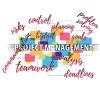Business Transformation Requires Transformational Leaders
Leadership and teaming skills are front and center in times of rapid change. Meet today’s constant disruption head on with expert guidance in leadership, business strategy, transformation, and innovation. Whether the disruption du jour is a digitally-driven upending of traditional business models, the pandemic-driven end to business as usual, or the change-driven challenge of staffing that meets your transformation plans — you’ll be prepared with cutting edge techniques and expert knowledge that enable strategic leadership.
Subscribe to Arthur D. Little's Culture & Leadership Newsletter
Insight
In a recent webinar, Cutter Consortium Senior Consultant Gustav Toppenberg and Stefan Henningsson discussed the problem of growth by acquisition and how advances in enterprise architecture practices not only overcome obstacles but also enable value creation. In this Advisor, we share some questions asked at the end of the webinar that may help you to use EA to unlock the value potential of your own acquisitions.
This week's edition of The Cutter Edge takes a look at why agile adoption fails, why digitization in healthcare is an imperative, how the automotive industry can amplify its competitive advantage, and more!
Even before the coronavirus pandemic hit, automation was deemed an important element of business survival and digital transformation strategies. Now we are constantly informed by vendors, the media, and IT advisory firms that business process automation is more necessary today than ever.
As IS executives, you negotiate constantly — whether it be externally with vendors, contractors, or other partners, or internally with different managers, departments, your project teams, or your direct reports. Some of these negotiations are formal, but most are informal, involving day-to-day interactions at work. These negotiations are consequential, determining your budgets, deliverables, schedules, availability of equipment or services, and other factors that influence your success. Unfortunately, many IS professionals never get exposed to negotiation skills and strategies as part of their education and training.
The COVID-19 pandemic has led to sizable disruptions in international economic activity, impacting all industries, although at different magnitudes. It is now time for decision makers to expand their focus beyond immediate crisis management to actions that will strengthen their competitive play in the medium and long term. In this Advisor series, we take a look at the telecom, media, and technology sectors, in particular, which show relatively strong resilience to the adverse impact of COVID-19. Here in Part I, we begin with the COVID-19 impact to the consumer electronics and media world.
I’ve always hoped to make risk-adjusted project schedule commitments while having teams buy in to working toward more aggressive target schedules. And I wanted to do so in support of the notion that great organizations must continuously strive to do more with less. This might sound contradictory, but it does not need to be — not if an organization also practices (and assimilates the results of) proactive risk management with the use of schedule risk analysis modeling and simulation tools and techniques.
While the coronavirus pandemic has disrupted the economy and work routines, it also provides opportunities for organizations to implement continuous learning and make progress toward upskilling and reskilling employees. We recommend managers and companies consider the four types of learning technology for workforce training, professional development, and onboarding described in this Advisor.
In the third installment of their webinar series, “Using AI/Machine Learning to Manage Risk,” Cutter Senior Consultants Carl Bate, Craig Wylie, and Tom Teixeira answered some questions about new risk models that utilize artificial intelligence (AI) and machine learning (ML) to understand and respond to the changing business landscape.






















